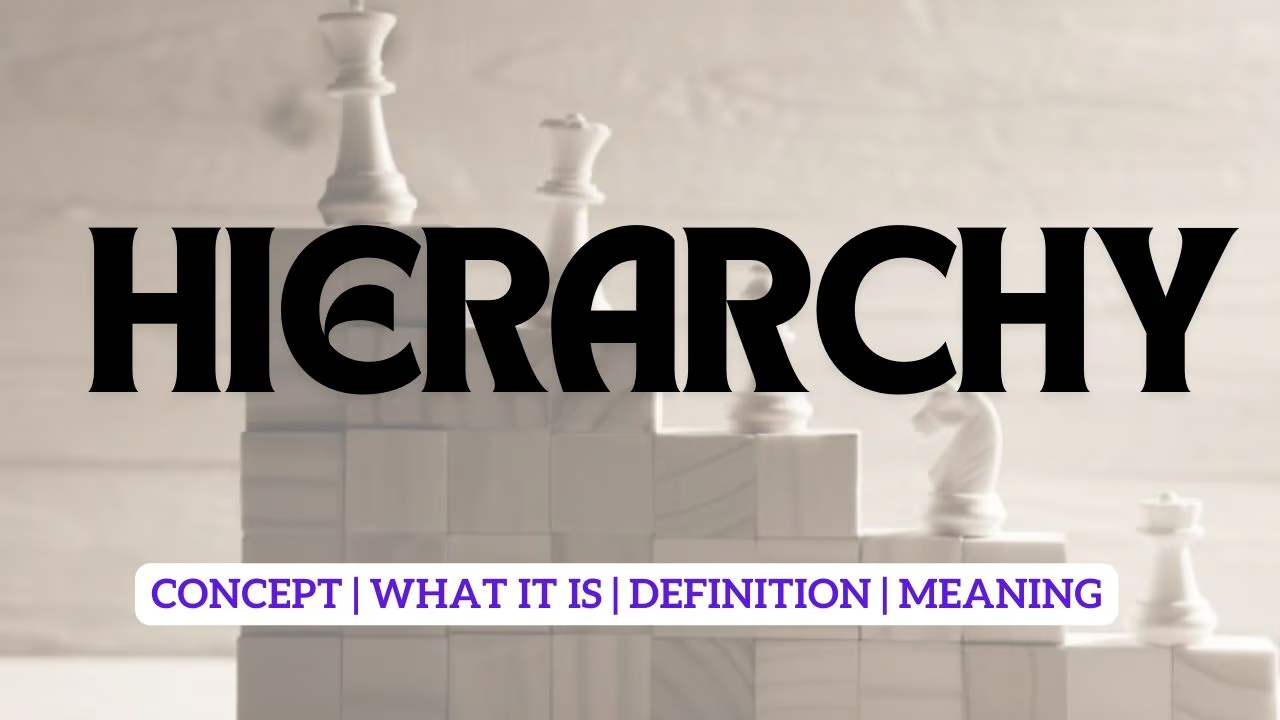Hierarchy Definition: We explain what hierarchy is, its origin and hierarchical organization. Also, the social hierarchy, in companies and values.
What is Hierarchy?
Hierarchy is a mode of organization in which a subordination of the elements is applied with respect to the upper rung, that is, it is a structure in which each element is subordinated to the previous one. Any structure that is governed by the notion of hierarchy can be considered a hierarchical organization, be it an army, a categorization of objects, or a business organizational chart. You should read this(Eclogue)!
The word “hierarchy” comes from the Greek words hierós (“sacred” or “divine”) and arkhei (“order” or “command”). That is to say, it was initially understood as the divine mandate, that is, the power exercised by the clerics in charge of the sacred rites of the ancient Greek religion.
However, the notion of hierarchy was not born then, but has been present in human organizations and ideas since the beginning of time: it is a way of understanding order, which subordinates some elements to others.
Thus, for example, hierarchical organization was put into practice when building societies in which a leader, a pharaoh or a council of elders enjoyed power and political authority over the rest of the inhabitants.
It is also used when classifying known materials, going from the most to the least pure, or when classifying animals, in what we know today as the evolutionary tree of species. Perhaps the most natural case of hierarchy is that which arises within the family, where the parents came first and exercise authority over their children.
Nowadays, in any case, hierarchy is part of all areas of our lives and is constantly put into practice, whether as a natural order of things or, on the contrary, as a form of human organization. You should read this(Dramatic Genre)!
Hierarchy of values
In the personal sphere, a hierarchy of values or scale of values is the classification of individual interests between more and less important, according to the weight they have for our subjectivity. For example, one person may value their family above money and leisure, while others may consider money to be the most important thing in their lives.
Every hierarchy of values comprises a set of elements that must be ordered according to the moral, emotional, intellectual or even ideological considerations of a person or a community. This establishes a classification regarding what is priority and what is secondary, that is, what things have hierarchy over others.
Social hierarchy
A social hierarchy is one that organizes and stratifies the members of society. This order determines and is determined by the place that each individual has in the productive processes, or in political power. It can be more or less rigid, depending on whether it allows subordinates to rise to the role of their superiors, or whether it understands society as an immobile classification.
The social classes of industrial society, for example, constitute a mobile hierarchical order, in which (however difficult it may be) a class can rise (or fall) to other rungs, and there is some room for maneuver. In contrast, the caste and estate society that existed during the European Middle Ages was strongly hierarchical, distinguishing the nobility from the commoners according to their birth and not allowing mobility between castes.
The social hierarchy is immanent to the social order and the structure of societies, and we cannot think of life without it. However, it is not necessarily of a single type: there can be more just and egalitarian hierarchies, or brutal and vertical hierarchies.
Hierarchy in companies
Similarly to societies, companies and organizations tend to be governed internally by an organizational hierarchy, that is, by a structure that establishes leaders and subordinates for each productive area of the company. This structure tends to be pyramidal, gaining authority and responsibilities as one ascends to the top, where the CEOs or general managers are.
Thus, tasks and responsibilities are distributed in a specific way. In addition, authority is divided into sectors so that, as one ascends to the top, the company’s perspective can be more general and less involved in details.
However, this does not mean that all management and leadership styles should be the same. For example, a hierarchy that is considered unequal or unfair, that isolates the different sectors of the company or that fosters an oppressive and police-like work environment, will be a detrimental factor for the well-being of the organization.
In fact, many companies today are betting on innovation in management and hierarchical matters, that is, on soft and dynamic structures that encourage dialogue and a sense of belonging in the work team, instead of the feeling that the orders of a tyrannical foreman will be obeyed.
